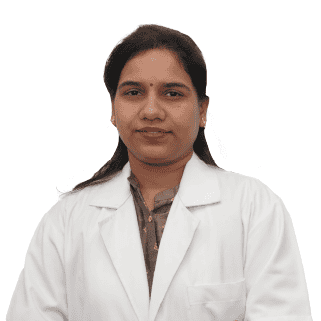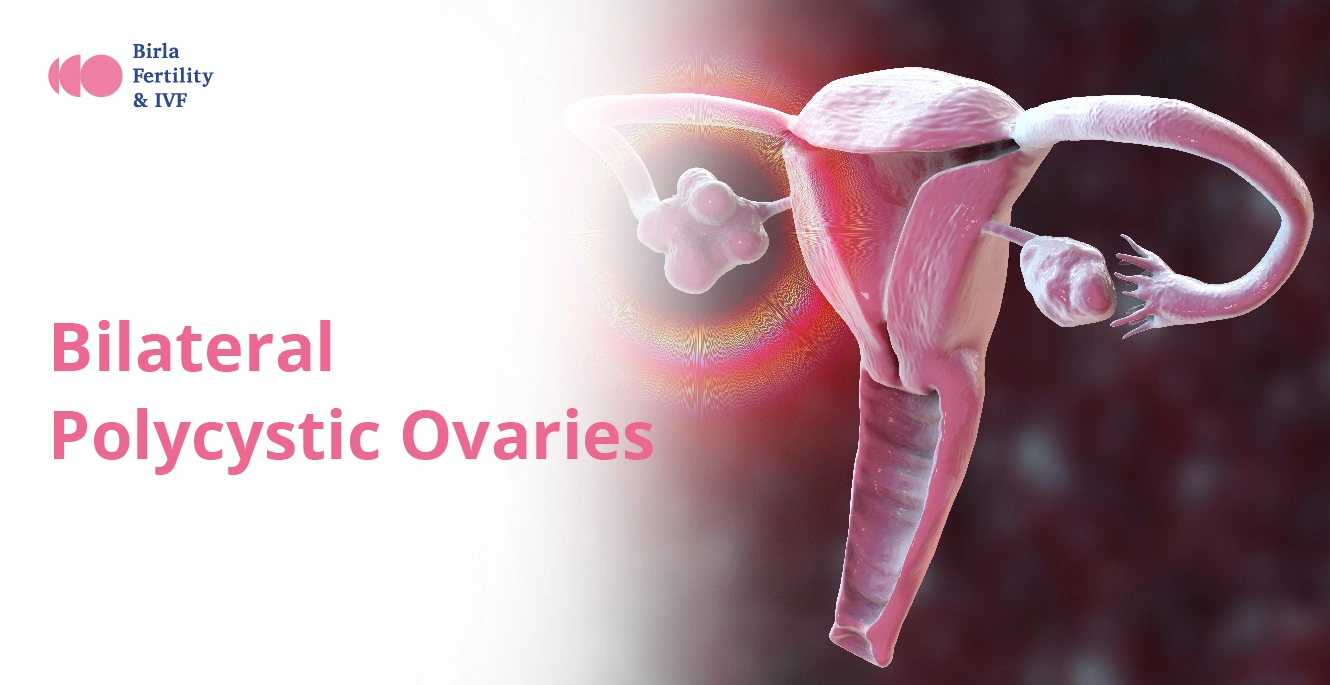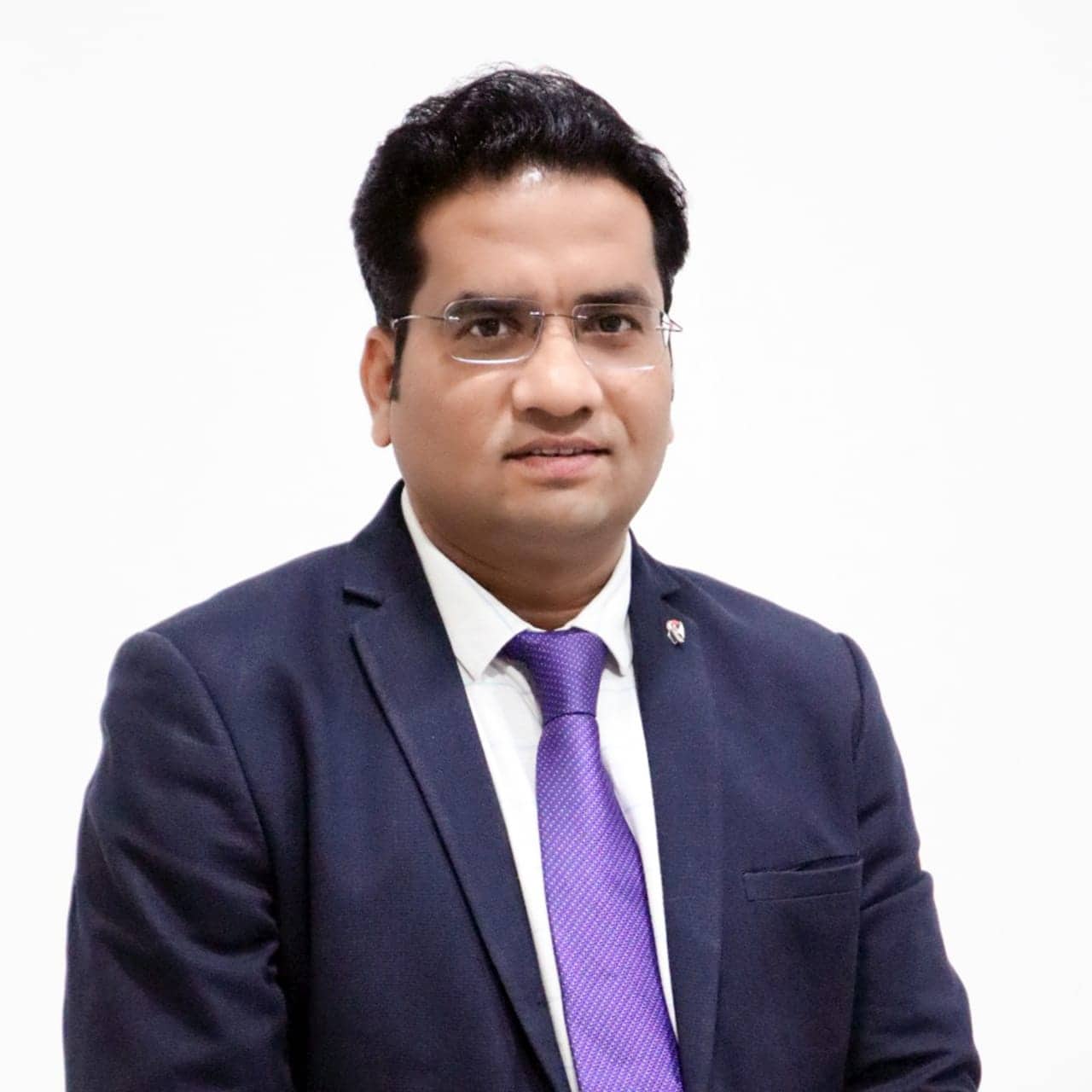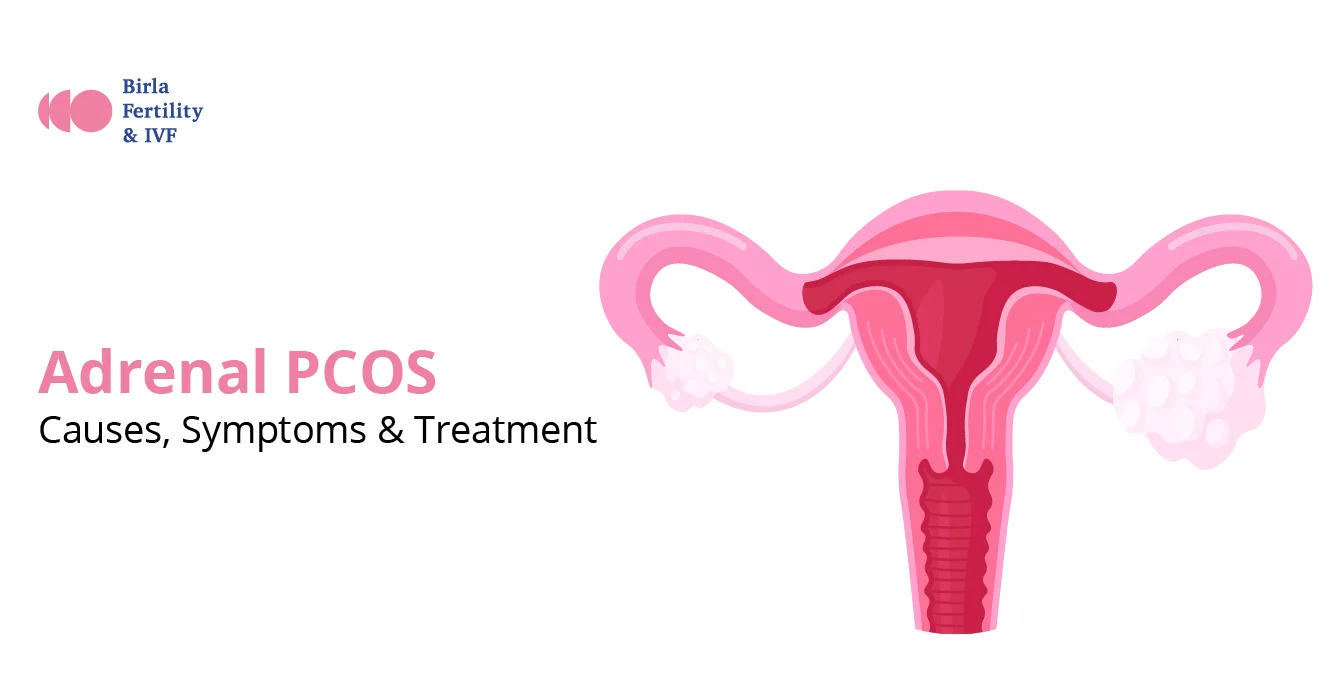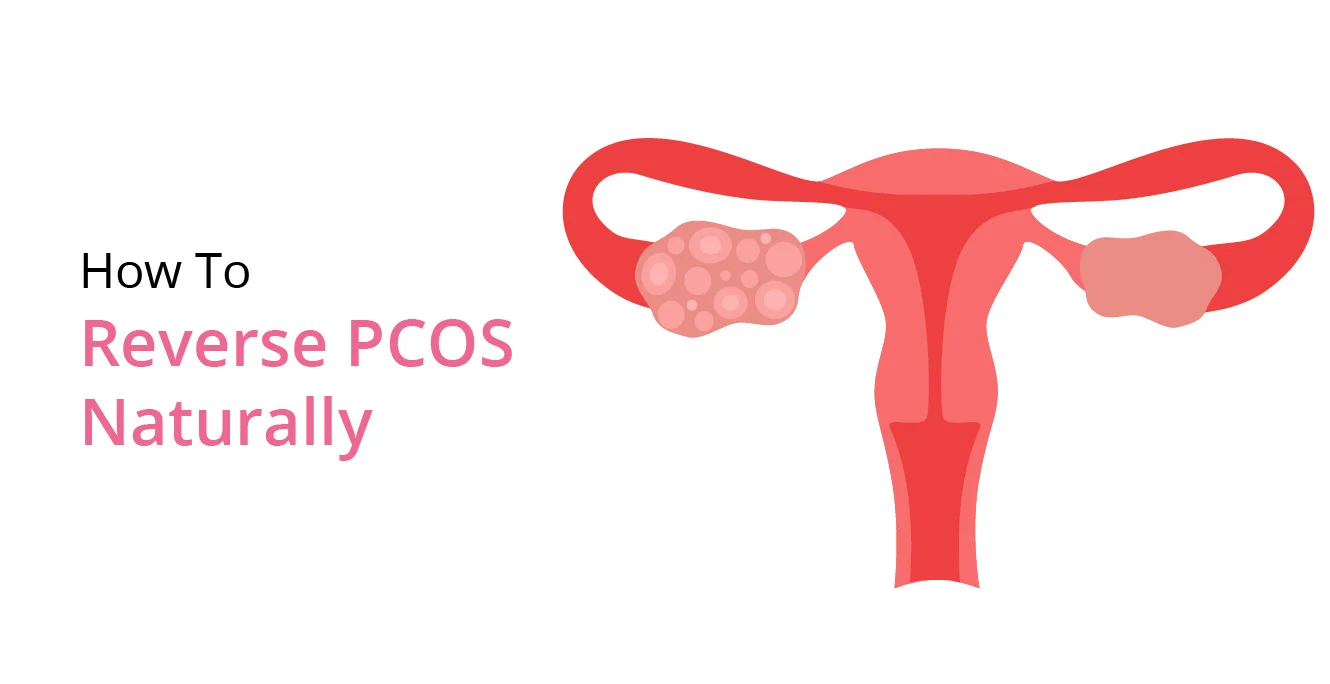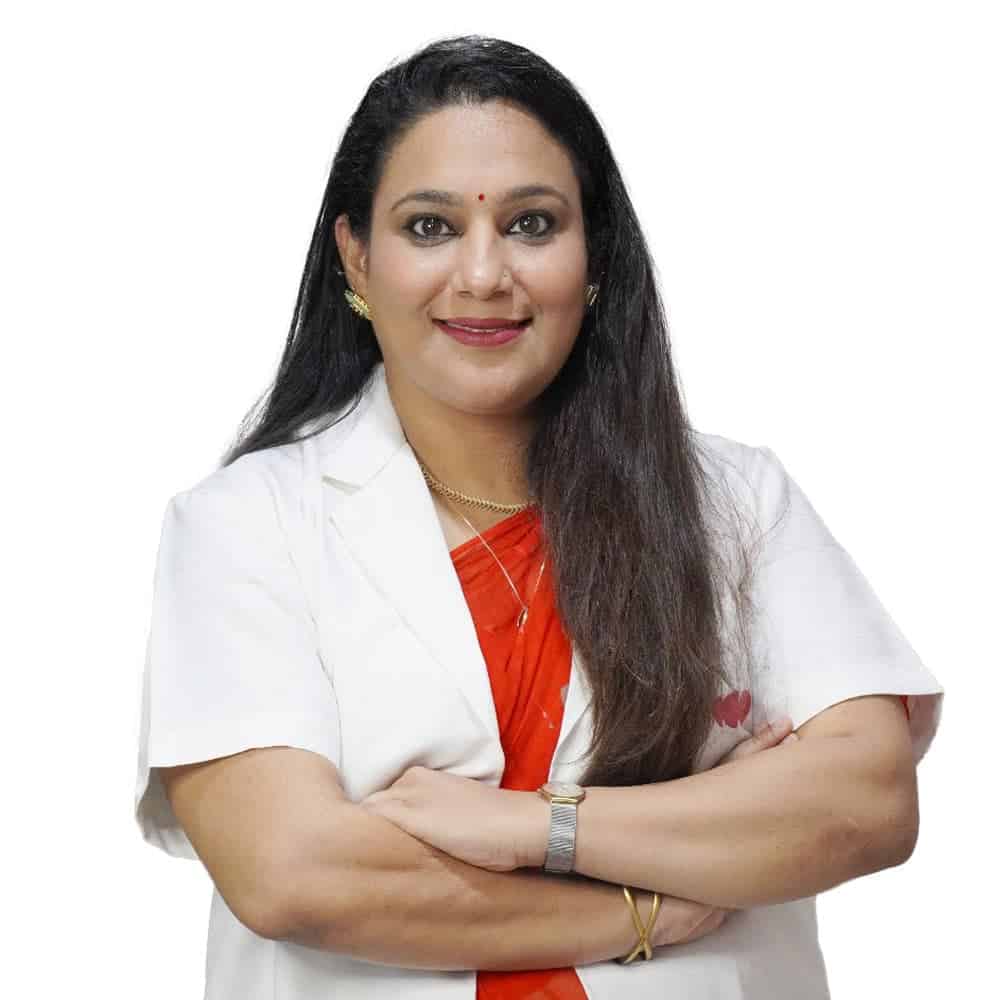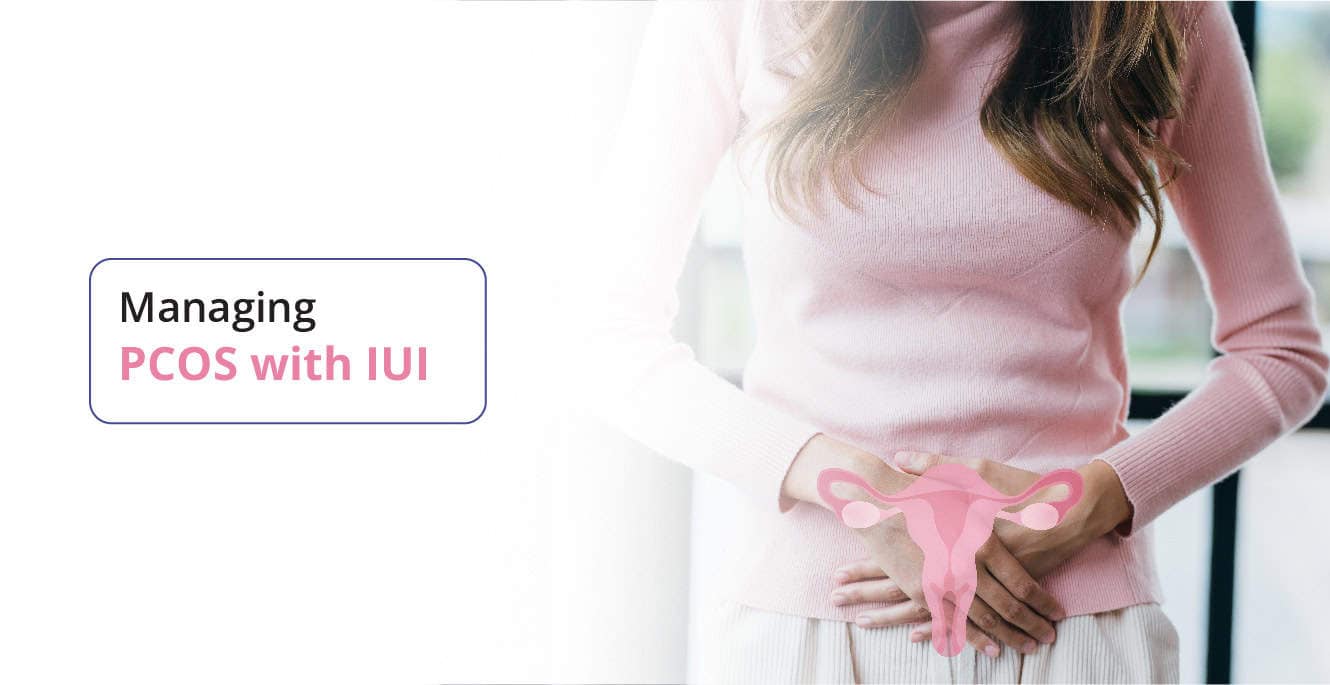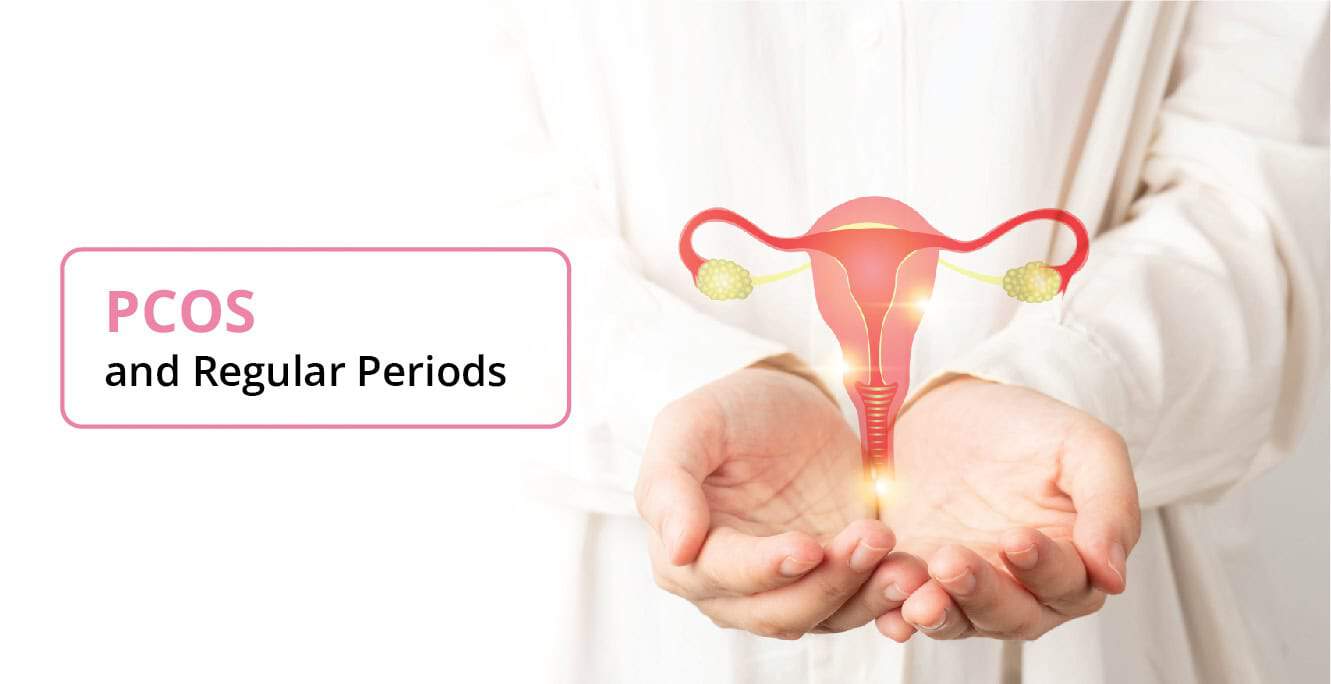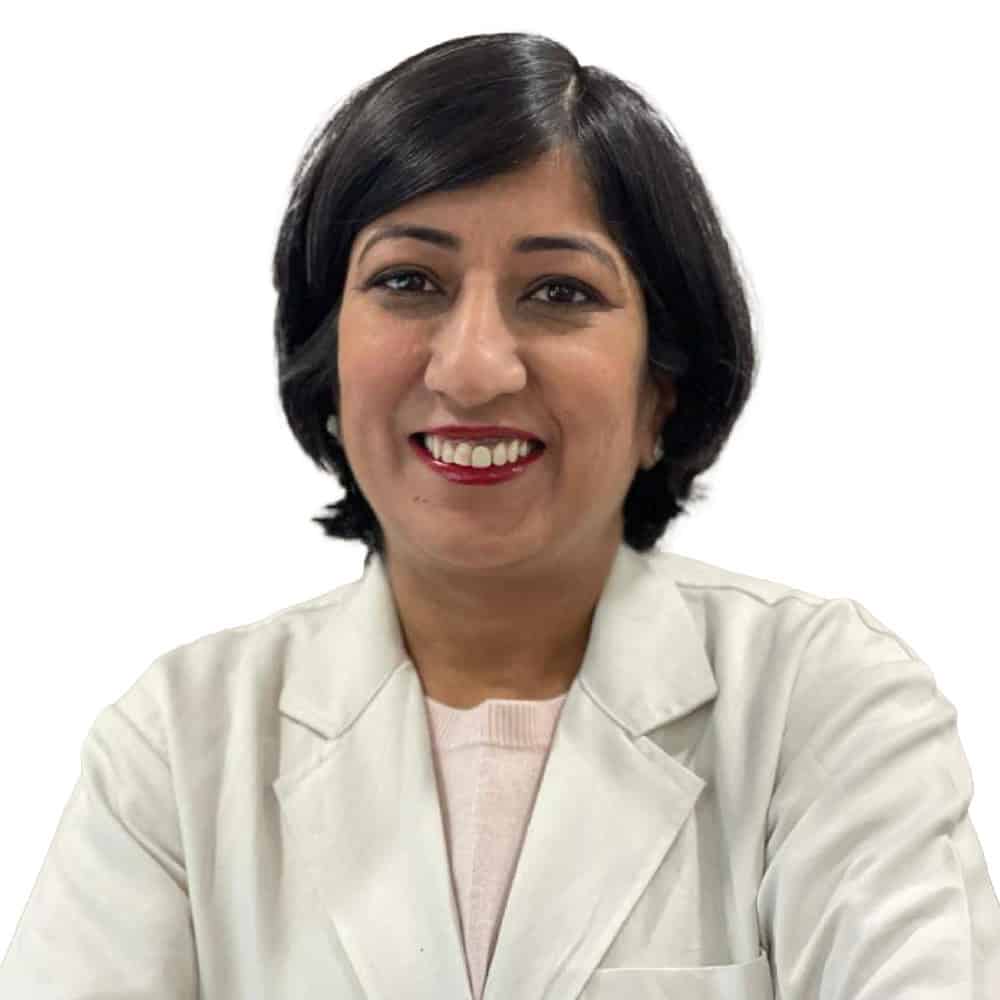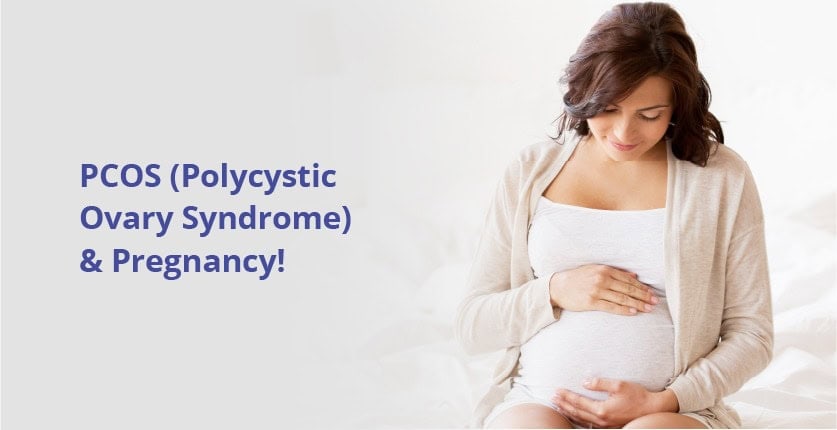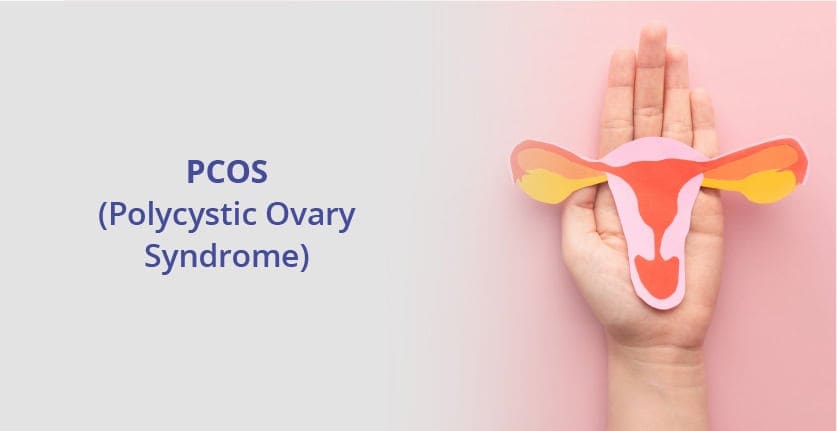Polycystic Ovary Syndrome (PCOS) is a common hormonal disorder affecting women of reproductive age. One of the characteristic features of PCOS is bilateral polycystic ovaries. If you’ve been diagnosed with bilateral polycystic ovaries, you might have questions about what it means for your health and fertility. In this article, we’ll discuss the causes, risk factors, symptoms, complications, and treatment options for managing this condition.
What are Bilateral Polycystic Ovaries?
Bilateral polycystic ovaries refer to the presence of multiple small cysts in both ovaries. This condition is a hallmark of PCOS, which is characterised by hormonal imbalances that can lead to ovulation disorder and various other symptoms.
However, not all women with polycystic ovaries have PCOS. The presence of polycystic ovaries alone does not necessarily indicate PCOS, as other diagnostic criteria must also be met.
Difference Between PCOS & Bilateral PCOS
Although both PCOS and bilateral PCOS are hormonal conditions that impact women, they have minor differences:
|
PCOS |
Bilateral PCOS |
|
A condition characterized by multiple small cysts on one or both ovaries, along with hormonal imbalances and other symptoms. |
A subtype of PCOS where cysts are present on both ovaries. |
What Causes Bilateral Polycystic Ovaries?
While the exact cause of bilateral polycystic ovaries is not fully understood, several factors are thought to contribute to the development of this condition. Some of them include:
-
Insulin Resistance: High insulin levels trigger excess androgen production, disrupting ovulation and leading to ovarian cysts.
-
Chronic Low-grade Inflammation: Low-level inflammation may cause the ovaries to produce more androgens, contributing to cyst formation.
-
Genetic Predisposition: Family history of PCOS increases the risk due to genetic factors.
-
Hormonal Imbalances: Excess androgens and abnormal LH/FSH levels prevent proper ovulation, causing cysts.
-
Lifestyle Factors: Obesity and other lifestyle factors can worsen symptoms.
Risk Factors for Developing Bilateral Polycystic Ovaries
Certain factors can increase a woman’s likelihood of developing bilateral polycystic ovaries, including:
-
Family history: Women with a family history of PCOS are more likely to develop the condition.
-
Obesity: Being overweight or obese is a significant risk factor for bilateral polycystic ovaries, as it can exacerbate insulin resistance and hormonal imbalances.
-
Ethnicity: While not exclusive, bilateral polycystic ovaries are more prevalent in certain ethnic groups.
-
Other health conditions: Women with conditions like type 2 diabetes, high blood pressure, and high cholesterol are at a higher risk of developing bilateral polycystic ovaries.
What are the Symptoms of Bilateral Polycystic Ovaries?
The symptoms of bilateral polycystic ovaries can vary from person to person. However, some common signs include:
-
Excessive hair growth on the face, chest, and back (hirsutism)
-
Acne and oily skin
-
Weight gain or difficulty losing weight
-
Thinning hair on the scalp
-
Darkening of skin in certain areas (acanthosis nigricans)
Is bilateral polycystic ovary syndrome dangerous?
While bilateral polycystic ovaries are not immediately dangerous, the associated complications can have serious health implications if not managed properly. Therefore, early diagnosis and treatment are crucial for preventing long-term health risks.
Complications Associated With Bilateral Polycystic Ovaries
If left untreated, bilateral polycystic ovaries can lead to several health complications:
-
Infertility: Ovulation problems make it difficult for women with PCOS to conceive.
-
Insulin resistance and type 2 diabetes: Insulin resistance is a key factor in PCOS, increasing the risk of developing type 2 diabetes.
-
Heart disease: High blood pressure, high cholesterol, and obesity associated with PCOS increase the risk of heart disease.
-
Sleep apnea: Obesity and insulin resistance in PCOS can increase the likelihood of sleep apnea.
-
Depression and anxiety: The physical and emotional impact of PCOS can contribute to anxiety and depression.
-
Endometrial cancer: Irregular menstrual cycles can lead to thickening of the uterine lining, increasing the risk of endometrial cancer.
Diagnosing Bilateral Polycystic Ovaries
Diagnosis of bilateral polycystic ovarian morphology typically involves a multi-faceted approach that takes into account your symptoms, physical examination findings, and diagnostic test results. Your doctor may recommend the following:
-
Physical examination: Checking for signs of excess hair growth, acne, and other physical symptoms.
-
Medical history: Reviewing menstrual cycle patterns and other health issues.
-
Pelvic exam: A thorough examination of your reproductive organs to identify any abnormalities.
-
Hormone tests: Measuring androgen and insulin levels.
-
Ultrasound: Confirming the presence of multiple cysts on the ovaries. The presence of 12 or more follicles measuring 2–9 mm in diameter, or an ovarian volume of greater than 10 mL, in one or both ovaries is considered a polycystic ovarian morphology.
Myth busting: PCOS is not just about cysts
While there is no cure for PCOS or bilateral polycystic ovaries, the symptoms can be effectively managed through various treatments and lifestyle changes like healthy eating, engaging in physical activity, and losing weight.
Treatment Options for Bilateral Polycystic Ovaries
Treatment for bilateral polycystic ovaries focuses on managing symptoms and preventing complications. The approach may include both non-surgical and surgical options:
Non-surgical Treatments
-
Medications:
-
Hormonal birth control pills (or oral contraceptives), patches, or Intrauterine Systems (IUS) to regulate menstrual cycles and reduce androgen levels
-
Medications like clomiphene and gonadotropins to help induce ovulation for women trying to conceive
-
Metformin to improve insulin sensitivity and reduce the risk of diabetes
-
Anti-androgen medications such as spironolactone, finasteride, and cyproterone acetate to manage hirsutism and acne
-
-
Dietary supplements:
-
Some supplements, such as inositol, may help improve insulin sensitivity and reduce androgens.
-
Surgical Treatments
-
Ovarian drilling: A minimally invasive procedure that involves making small holes in the ovaries to restore ovulation.
-
Laparoscopic ovarian diathermy: A surgical procedure that uses heat to destroy the androgen-producing tissue in the ovaries.
Lifestyle Changes for Managing Bilateral Polycystic Ovaries
Making sustainable lifestyle changes is a crucial component of managing PCOS and promoting overall health. Some key areas to focus on include:
-
Diet: Eating a balanced diet rich in fruits, vegetables, whole grains, lean proteins, and healthy fats can help regulate blood sugar and insulin levels.
-
Exercise: Regular physical activity of at least 150 minutes can improve insulin sensitivity, reduce weight, and regulate menstrual cycles.
-
Weight management: Losing even a small amount of weight (about 5% of body weight) can significantly improve PCOS symptoms.
-
Stress management: Stress reduction techniques such as yoga, meditation, and counselling can help manage the emotional and psychological aspects of bilateral PCOS.
-
Adequate sleep: Getting enough sleep, aiming for 7-9 hours per night, can help manage PCOS symptoms.
Remember, small, consistent changes can make a significant impact over time. Be patient with yourself and celebrate each step forward in your journey.
Getting Pregnant With Bilateral Polycystic Ovaries
While bilateral polycystic ovaries can make conceiving more challenging, it’s important to know that pregnancy is still possible. Many women with PCOS, including those with bilateral involvement, have successfully achieved healthy pregnancies. The key is to work closely with your doctor to optimize your fertility and address any underlying issues. Additionally, fertility treatments can help realize the joy of parenthood. Some options may include:
|
Treatment |
Description |
Success Rate |
|---|---|---|
|
Ovulation induction |
Medications like clomiphene citrate or letrozole to stimulate ovulation |
40%-50% |
|
Intrauterine Insemination (IUI) |
Placing sperm directly into the uterus |
10%-20% per cycle |
|
Fertilisation of eggs outside the body |
40%-50% per cycle |
Common Concerns About Bilateral PCOS:
Bilateral Polycystic Ovaries and Conception
While bilateral polycystic ovaries can impact fertility, they do not necessarily cause permanent damage to your ability to conceive. With proper management and treatment, many women with PCOS can successfully achieve pregnancy.
Irregular Periods and Bilateral Polycystic Ovaries
Irregular periods are one of the common symptoms of bilateral polycystic ovaries, but they can also be caused by other factors. If you experience irregular periods or other PCOS symptoms, it’s important to consult with your doctor for a proper diagnosis and treatment plan.
Word from an expert
Bilateral polycystic ovaries can be a challenging condition to navigate, but with proper management and support, it is possible to minimise symptoms and maintain overall health. Remember, early intervention is key to preventing complications and preserving fertility. ~ Dr. Aashita Jain

